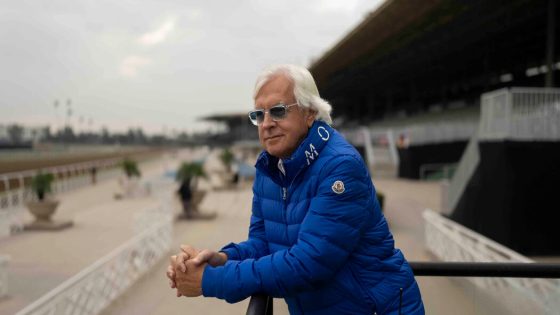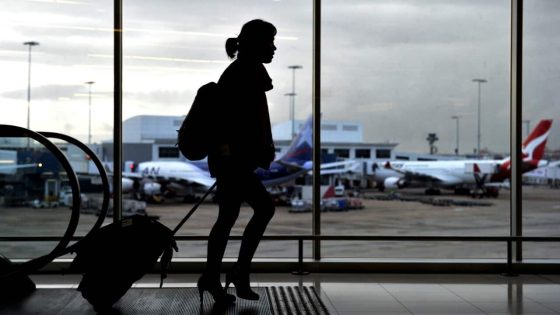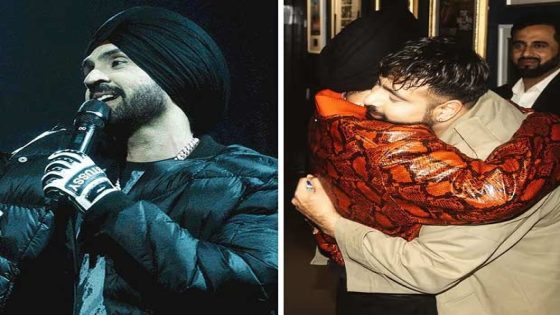The racetrack known as Old Hilltop has long been a safe space for the trainer Bob Baffert. Eight times he has come to Baltimore with a horse fast enough to leave with the blanket of black-eyed Susans that are draped over the withers of the Preakness Stakes winner.
The green stakes barn with white trim is a friendly bunker for Baffert. It houses all the horses competing in the second leg of the Triple Crown and is the daylight-to-dusk hub for those who care for them. There are familiar faces, like Baffert’s mentor and friend D. Wayne Lukas, 88, who wears a Stetson better than anyone this side of John Wayne.
There are colleagues he would like to know better, like Ken McPeek, a burly Kentuckian who has brought his Kentucky Derby-winning colt, Mystik Dan, to Pimlico Race Course this week in search of another victory on Saturday.
Twice, Pimlico has been the temporary home of Triple Crown champions trained by Baffert. In 2015, American Pharoah used it as his base on his way to becoming the first horse to sweep the series in 37 years. In 2018, Justify did the same.
Hands down, Baffert says, the Preakness is his favorite Triple Crown race: “Your Derby winner usually shows up there. We’re all in the same barn. It’s very relaxing, and it’s sort of fun.”
In recent years, good times and carefree vibes have been hard for Baffert to find on the Triple Crown trail. Churchill Downs barred him from the Derby for the third consecutive year, punishment after his colt Medina Spirit, who finished first in the 2021 Derby, failed a postrace drug test. He returned to the Triple Crown races last year at Pimlico after serving a suspension handed down by Kentucky regulators in 2022.
It is unclear whether Baffert, 71, will be welcomed back to the Derby next year or ever again. Bill Carstanjen, the chief executive of Churchill Downs Inc., the company that hosts the Derby, said he had extended what was a two-year ban through 2024 because Baffert “hasn’t accepted responsibility for what happened.”
Baffert, whose status will be re-evaluated by Churchill in 2025, still has not shown any contrition.
Last year, he returned to Pimlico in tragic fashion. His colt National Treasure won the Preakness, but earlier in the day another of his horses, Havnameltdown, was injured and euthanized on the racetrack.
In good times and bad, however, Baffert has been surrounded with expensive horses bought by a coterie of high-profile owners.
Baffert’s Preakness horse this year, Imagination, was bought for $1.05 million at a yearling sale by a group that includes a company controlled by top employees of the billionaire investor George Soros; Barbara Banke, the owner of Jackson Family Wines; and Sol Kumin, a hedge fund executive. The group’s members call themselves the Avengers after the comic books superheroes and, along with a revolving cast of wealthy horse buyers, have spent tens of millions of dollars at horse sales.
They, and other owners willing to spend, have helped Baffert win the Derby six times, be named champion trainer four times and reach third in the sports career earnings list with more than $355 million in purses.
“Those $2 and $3 million horses that he purchases every year make him pretty effective,” Lukas said. “He buys those real, real strong horses. And then he knows what to do with them.”
That is high praise from Lukas, who was a master at persuading the economically endowed to empty their pockets to compete with the sheikhs and Irish sports-betting impresarios for the finest horse flesh at public auctions. From 1980 to 2000, he was the Gordon Gekko of the shed row, with hundreds of horses spread across multiple states. The result: 13 Triple Crown race victories.
The Avengers and other owners have stuck with Baffert even as he has become a polarizing figure in thoroughbred racing. Beyond the Derby suspension, horses trained by him have failed 30 drug tests over four decades, according to regulators. Since 2000, at least 77 horses have died under his care, according to data from the California Horse Racing Board, most notably Medina Spirit, who died after a workout at a California racetrack seven months after the Derby.
The colt was owned by Amr Zedan, a Saudi businessman. Zedan also paid $2 million for another Baffert-trained colt, Muth, who he had hoped would give him his first Triple Crown victory in the Preakness on Saturday. But Muth got a spiking fever on Wednesday after traveling to Baltimore and was declared out of the race.
In the weeks before the Derby, Zedan sought a temporary injunction against Churchill Downs that would allow Muth and other horses trained by Baffert to enter the Derby. A Kentucky Circuit Court judge ruled against him.
A representative for Zedan said he was not interested in talking about his loyalty to Baffert. Tom Ryan of Soros Fund Racing and Banke also declined to comment on their trainer.
But another prominent owner in the sport, Ken Ramsey, will say out loud the reason expensive and talented horses continue to stream through the Baffert barn in Southern California.
“If you want to get a horse to the Kentucky Derby, he’s the man,” said Ramsey, who is based in Kentucky and does not employ Baffert. “He knows what he’s doing.”
Many in the sport would like to see the impasse between Baffert and Churchill Downs resolved so that more attention can be focused on the safety and the antidoping efforts of the Horseracing Integrity and Safety Authority, the federal agency that now regulates the sport.
Last year, beneath Churchill Downs’s twin spires, seven horses died during the week of the showpiece event — two of them in races in the hours leading up to the Derby. In the days after, five more sustained fatal injuries, prompting Churchill officials to move their races to another Kentucky racetrack.
After Havnameltdown’s death, Maryland officials released a 70-page necropsy report detailing the colt’s pre-existing injuries, including lesions in each fetlock; such lesions occur when the cartilage has worn away from repetitive injury. The New York Times had two veterinarians independently review the records. Both said the colt had not received proper care and should not have raced that day.
In contrast, after the Horseracing Integrity and Safety Authority and Churchill Downs put stepped-up safety measures in place, this year’s Derby was casualty free and drew the race’s largest television audience since 1989. The average viewership for NBC’s broadcast was 16.7 million, up 13 percent from last year’s 14.8 million.
“Bob has brought some credit and I think he’s brought some discredit to our business,” said Terry Finley, the principal owner of West Point Thoroughbreds. “I believe with all my heart that Bob and his owners, they want what’s best for the business. I just don’t always agree that what they think is best for the business is what I do.
“The bottom line is we’ve been through this enough,” Finley continued. “We need to get in a room, quote unquote, and we need an exit ramp for all parties involved.”
For three years, Baffert argued in the courts and before state racing commissions that the 2021 Derby victory should not have been stripped from Medina Spirit and that he himself should not be punished. The colt was disqualified after testing positive for betamethasone, a potent corticosteroid used to reduce pain and inflammation. Baffert said it was from a skin cream.
In January, in a post on X, Baffert announced that he was dropping all legal challenges to “positively focus on the present and the future that our great sport offers.”
Carstanjen, the Churchill Downs chief executive, does not seem eager to forgive and forget.
“When you have somebody that’s failed the drug test in the Derby saying that he would do the same thing, he wouldn’t do anything differently if he had another opportunity because the rules have been misunderstood,” Carstanjen said, “that’s a pretty serious problem.”
Source Agencies




